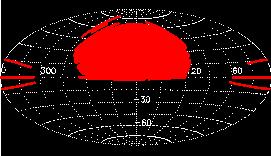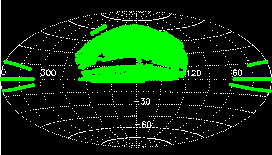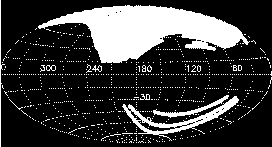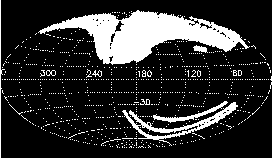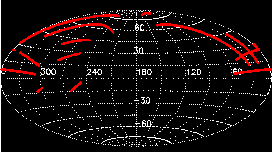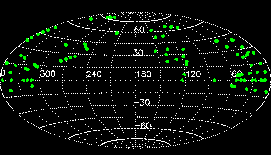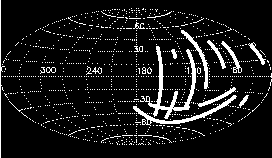
| Home |
| Where to Start |
| About DR6 |
| News and Updates |
| Tutorials |
| Data Products |
| Data Access |
| Sky Coverage |
| Instruments |
| Data Flow |
| Algorithms |
| Glossary |
| Known Problems |
| Help and Feedback |
| Search |
 |
Sky coverageThe DR6 contains that part of the SDSS imaging and spectroscopy taken through July 7, 2006. Here we give coverage plots and the detailed coverage tables from which they were constructed, though excluding the supplemental imaging scans released through DRsup. Further below, we outline the future sky coverage of SDSS. The survey terms are explained in the sections on imaging coverage and spectroscopic coverage below. For data interfaces, see the data access page.
Coverage tablesFor reference, the coverage tables describe the sky coverage in terms of survey coordinates. To translate the sky coverage into celestial coordinates, please refer to the coordinates section of the EDR paper and the description below. Note: The coverage tables, and a number of other files we distribute, are given as ASCII parameter (.par) files.
Note also the list of list of quality "holes" (small areas of bad seeing etc.) and missing data, the list of fields which are missing only apparently (e.g., data from different runs were used in target and best) and the list of differences in sky coverage between target and best. Imaging coverage: stripes, runs, rerunsThe survey coverage is defined in survey coordinates, as described in the coordinates section of the EDR paper. For detailed astrometry please see the following note about parts of the survey which have a slightly different survey coordinate system from the rest. StripesThe imaging survey scans the sky along great circles, which are circles of constant survey latitude eta. Scans are obtained along stripes spaced 2.5° in survey latitude. Each stripe has an integer stripe number n such that the inclination of a stripe with respect to the celestial equator is -25° + 2.5° × n. The boundaries of the region eventually to be surveyed by the SDSS are defined in terms of survey longitude lambda in atStripeDef.par. Runs cover strips, two strips cover a stripeAn imaging run designates a continuous scan of the imaging telescope. The survey camera's focal plane has six columns of CCDs, so that a single run consists of six camera columns (camcols) (see the instrument descriptions). The camera columns have a gap which is filled by an offset second run. The six camcols taken together are called a strip. Thus to completely cover the two strips making up one stripe, at least two runs are required. The imaging data reduction is done on a run-by-run basis, hence the imaging data in our Data Archive are accessible by run number. Great circle coordinatesEvery stripe has its own great circle coordinate system. The coordinate along a great circle is called mu. The range of data actually obtained for a given stripe is reported in terms of a range in great circle mu along that stripe as startMu and endMu in the coverage tables above. Both startMu and endMu are given in integer arcseconds. The calibrated object lists are accessible in the archive by stripe number and startMu on that stripe. For historical reasons, DR1 contained both photometric and
spectroscopic data which lay outside the official survey limits, i.e.,
the startMu/endMu for some runs extend beyond the
lambda limits for the stripes they cover. Since DR3,
only the FieldsA run is divided into images 2048 pix × 1361 pix which are called fields. Each field then has the first 128 rows of the following field attached to it, so that all survey images actually have a size of 2048 pix × 1489 pix. Object detection, photometry and classification are done field by field. In particular, the calibrated object lists and survey images are distributed separately for each field. To account for the overlap, object detection is not performed on the first 64 rows or the last 64 rows of each corrected frame. Note that one therefore should use only objects in
the "primary" area of
each survey field, in order to avoid duplicate area and duplicate
object detections. Near the center of a stripe, the primary area will
be the full 2048 pix × 1361 pix, but frames overlap near the
ends of stripes, reducing the primary area there. Please refer to how
"primary" is set in
the "status" flag of an object and please also see the details of
how overlapping areas are
resolved. The primary area of each field is recorded as entry
RerunsEvery time we (re)process our imaging data, we assign the outputs a new rerun number. Thus, a rerun does not imply re-observation, but is simply a re-reduction of the same run. The re-reduction can use more recent software or calibrations than a previous rerun, or both. Across runs, the rerun is an arbitrary index, so the same rerun of different runs does not have to be produced with the same software or calibrations. Target and BestWe publish two reruns for each run:
SpectroscopyThe spectrograph's 640 fibers are distributed on a plug plate of roughly 3° diameter (7 square degree area) projected on sky. Spectroscopic coverage is given in terms of the plate centers. Plates are identified by a unique number assigned during targetting and the MJD on which they were observed, to distinguish re-observations of the same plate.Incremental sky coverage of SDSSA map of the incremental coverage of the numbered Data Releases (i.e., excluding the EDR) by DR number. Imaging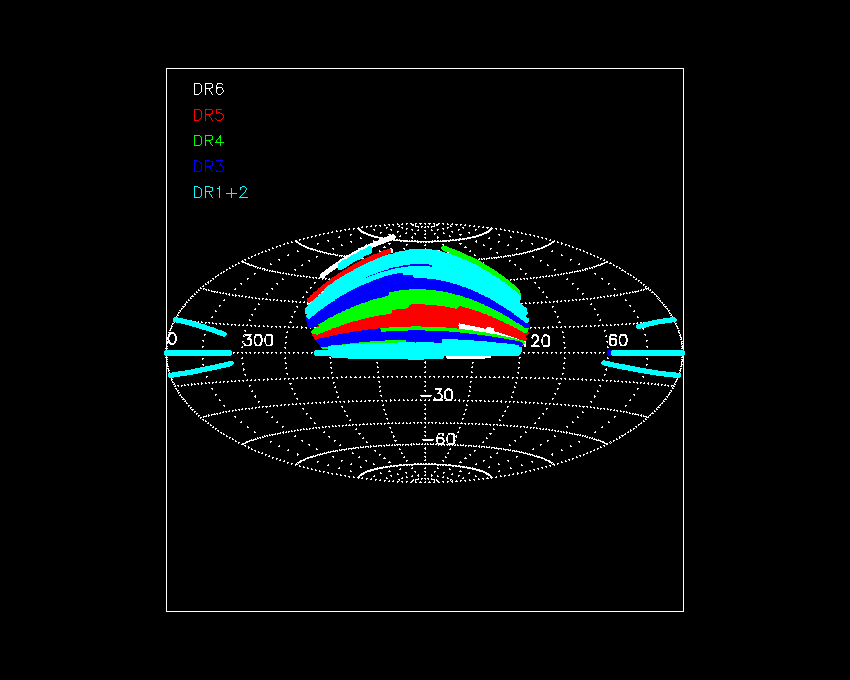
Spectroscopy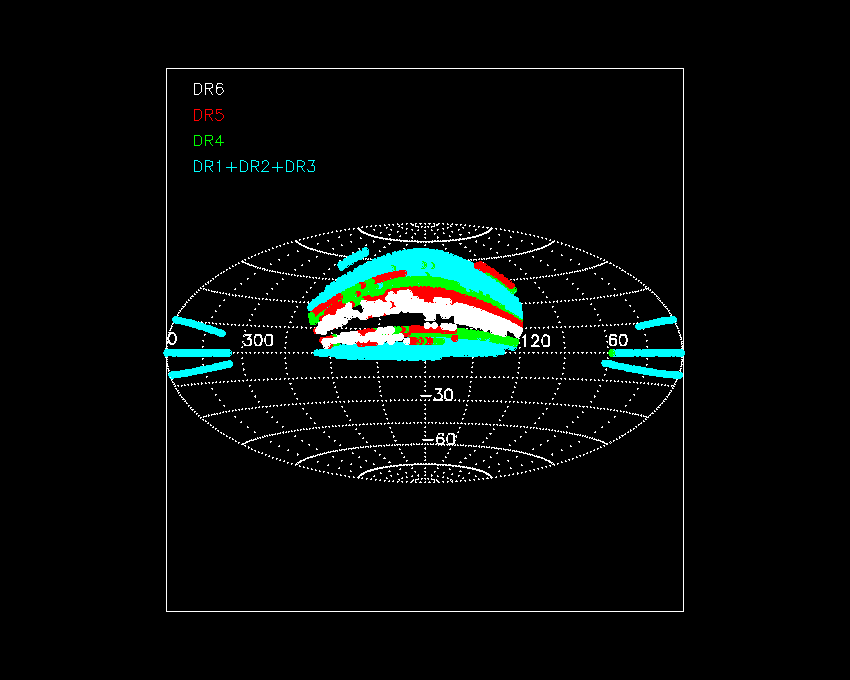
Future sky coverage of SDSSImaging and spectroscopy of the North Galactic Cap is continuing as part of the Sloan Legacy Survey, one of three components of SDSS-II. The Legacy Survey, which will continue through mid-2008, will complete spectroscopy over the full DR6 region. The SEGUE component of SDSS-II includes additional imaging, and spectroscopy of stellar targets. The Sloan Supernova Survey, the third component of SDSS-II, carries out repeated imaging of the southern equatorial stripe to discover and measure supernovae. The first data from SDSS-II are released as part of DR6. Last modified: Sat Sep 15 01:51:39 CEST 2007 |
